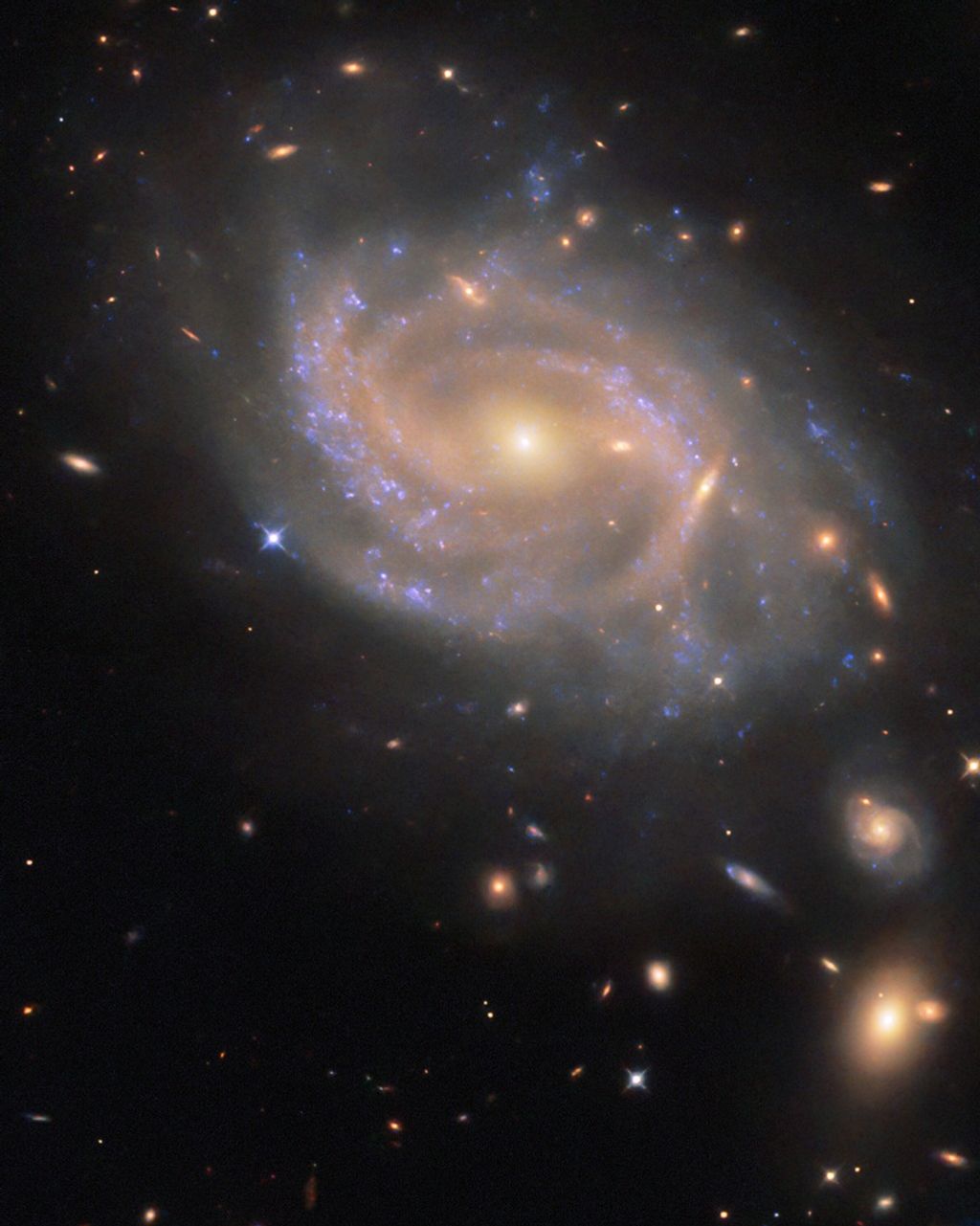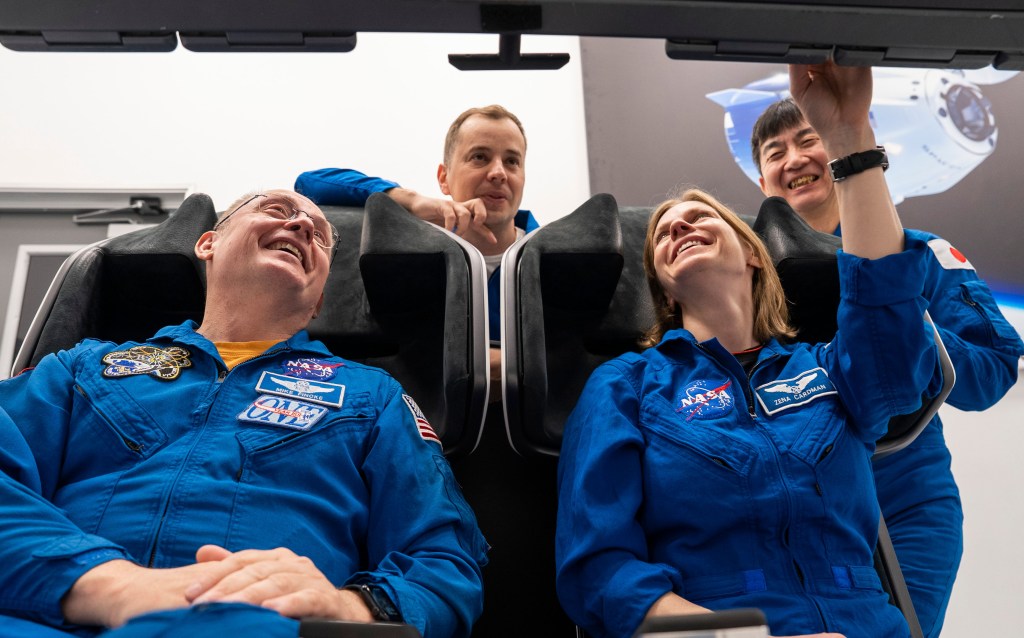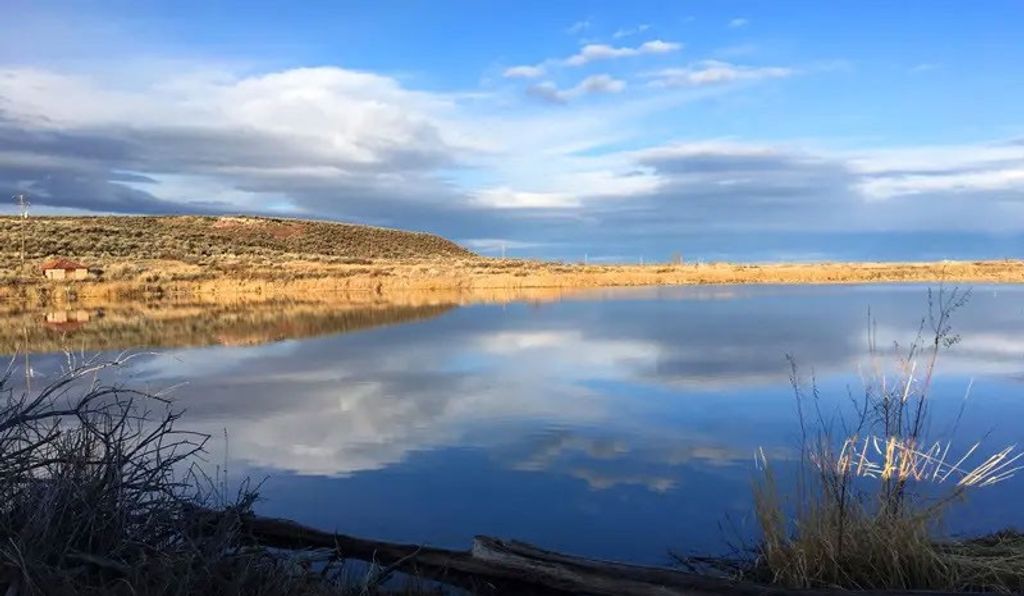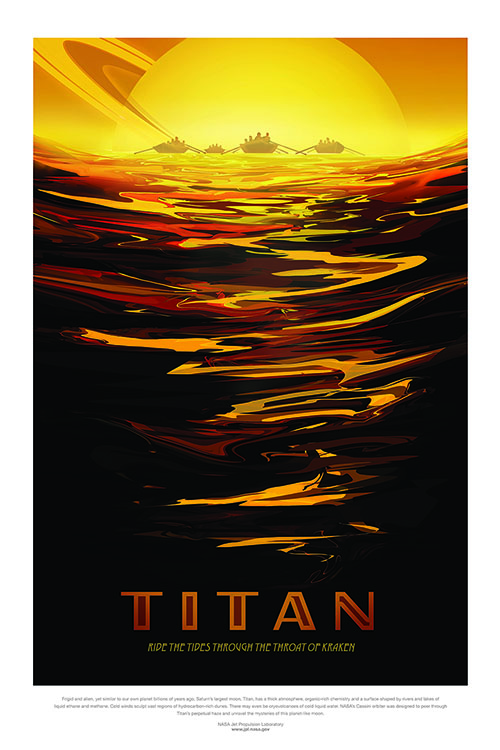Visions of the Future: Saturn Tour
March 1, 2017
These three posters imagine future tourism possibilities based on the rich history of Saturn exploration from the twin Voyager's Grand Tour to the epic discoveries made by the Cassini-Huygens mission.
- Frigid and alien, yet similar to our own planet billions of years ago, Saturn's largest moon, Titan, has a thick atmosphere, organic-rich chemistry and a surface shaped by rivers and lakes of liquid ethane and methane. Cold winds sculpt vast regions of hydrocarbon-rich dunes. There may even be cryovolcanoes of cold liquid water. NASA's Cassini orbiter was designed to peer through Titan's perpetual haze and unravel the mysteries of this planet-like moon.Download: PDF (5 MB) | High Resolution TIFF (207 MB)
- The discovery of Enceladus' icy jets and their role in creating Saturn's E-ring is one of the top findings of the Cassini mission to Saturn. Further Cassini mission discoveries revealed strong evidence of a global ocean and the first signs of potential hydrothermal activity beyond Earth – making this tiny Saturnian moon one of the leading locations in the search for possible life beyond Earth.Download: PDF (4 MB) | High Resolution TIFF (207 MB)
- NASA's Voyager mission took advantage of a once-every-175-year alignment of the outer planets for a grand tour of the solar system. The twin spacecraft revealed details about Jupiter, Saturn, Uranus and Neptune – using each planet's gravity to send them on to the next destination. Voyager set the stage for such ambitious orbiter missions as Galileo to Jupiter and Cassini to Saturn. Today both Voyager spacecraft continue to return valuable science from the far reaches of our solar system. Download: PDF (2.75 MB) | High Resolution TIFF (207 MB)
For a full set of posters imagining tourism in our solar system and far beyond visit JPL's Visions of the Future gallery.






























